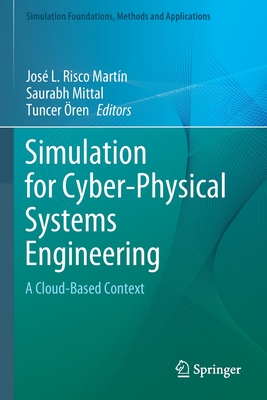商品描述
One of the most significant challenges in the development of embedded and cyber-physical systems is the gap between the disciplines of software and control engineering. In a marketplace, where rapid innovation is essential, engineers from both disciplines need to be able to explore system designs collaboratively, allocating responsibilities to software and physical elements, and analyzing trade-offs between them.
To this end, this book presents a framework that allows the very different kinds of design models – discrete-event (DE) models of software and continuous time (CT) models of the physical environment – to be analyzed and simulated jointly, based on common scenarios. The individual chapters provide introductions to both sides of this co-simulation technology, and give a step-by-step guide to the methodology for designing and analyzing co-models. They are grouped into three parts: Part I introduces the technical basis for collaborative modeling and simulation with the Crescendo technology. Part II continues with different methodological guidelines for creating co-models and analyzing them in different ways using case studies. Part III then delves into more advanced topics and looks into the potential future of this technology in the area of cyber-physical systems. Finally various appendices provide summaries of the VDM and 20-sim technologies, a number of valuable design patterns applicable for co-models, and an acronym list along with indices and references to other literature. By combining descriptions of the underlying theory with records of real engineers’ experience in using the framework on a series of case studies the book appeals to scientists and practitioners alike. It is complemented by tools, examples, videos, and other material on www.crescendotool.org.
Scientists/researchers and graduate students working in embedded and cyber-physical systems will learn the semantic foundations for collaborative modeling and simulation, as well as the current capabilities and limitations of methods and tools in this field. Practitioners will be able to develop an appreciation of the capabilities of the co-modeling techniques, to assess the benefits of more collaborative approaches to modeling and simulation, and will benefit from the included guidelines and modeling patterns.商品描述(中文翻譯)
嵌入式系統和網路物理系統開發中最重要的挑戰之一是軟體工程與控制工程之間的差距。在一個快速創新的市場中,來自這兩個領域的工程師需要能夠協作探索系統設計,分配軟體和物理元素的責任,並分析它們之間的權衡。
為此,本書提出了一個框架,允許非常不同類型的設計模型——軟體的離散事件 (DE)模型和物理環境的連續時間 (CT)模型——基於共同的場景進行聯合分析和模擬。各章節介紹了這種共同模擬技術的兩個方面,並提供了設計和分析共同模型的方法論的逐步指南。這些章節分為三個部分:第一部分介紹了使用Crescendo技術進行協作建模和模擬的技術基礎。第二部分則繼續提供創建共同模型和使用案例研究以不同方式分析它們的方法指導。第三部分深入探討更高級的主題,並研究這項技術在網路物理系統領域的潛在未來。最後,各種附錄提供了VDM和20-sim技術的摘要、適用於共同模型的多個有價值的設計模式,以及縮寫詞表、索引和其他文獻的參考。通過將基礎理論的描述與真實工程師在一系列案例研究中使用該框架的經驗記錄相結合,本書吸引了科學家和實踐者。它還附有工具、範例、視頻和其他材料,網址為www.crescendotool.org。
在嵌入式系統和網路物理系統領域工作的科學家/研究人員和研究生將學習協作建模和模擬的語義基礎,以及該領域方法和工具的當前能力和限制。實踐者將能夠欣賞共同建模技術的能力,評估更協作的建模和模擬方法的好處,並從所包含的指導方針和建模模式中受益。





















